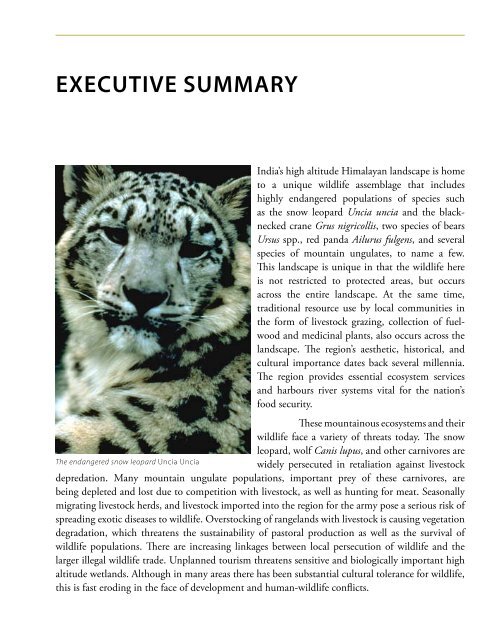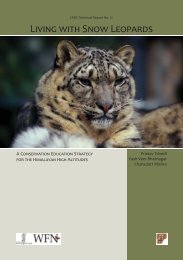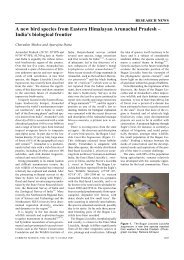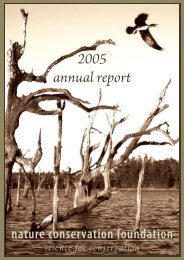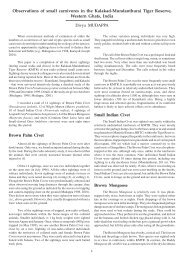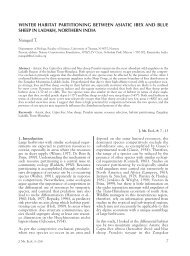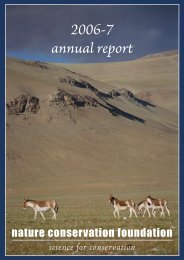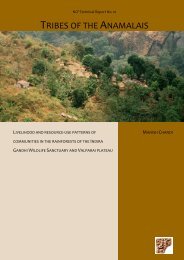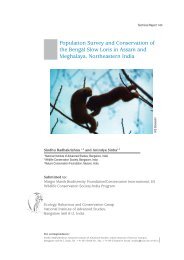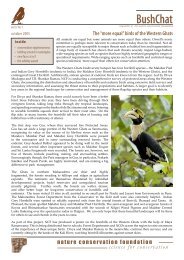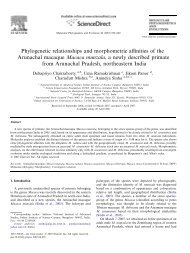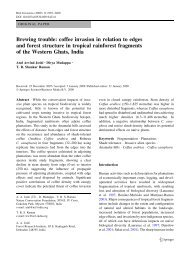towards project snow leopard - Nature Conservation Foundation
towards project snow leopard - Nature Conservation Foundation
towards project snow leopard - Nature Conservation Foundation
Create successful ePaper yourself
Turn your PDF publications into a flip-book with our unique Google optimized e-Paper software.
EXECUTIVE SUMMARY<br />
India’s high altitude Himalayan landscape is home<br />
to a unique wildlife assemblage that includes<br />
highly endangered populations of species such<br />
as the <strong>snow</strong> <strong>leopard</strong> Uncia uncia and the blacknecked<br />
crane Grus nigricollis, two species of bears<br />
Ursus spp., red panda Ailurus fulgens, and several<br />
species of mountain ungulates, to name a few.<br />
This landscape is unique in that the wildlife here<br />
is not restricted to protected areas, but occurs<br />
across the entire landscape. At the same time,<br />
traditional resource use by local communities in<br />
the form of livestock grazing, collection of fuelwood<br />
and medicinal plants, also occurs across the<br />
landscape. The region’s aesthetic, historical, and<br />
cultural importance dates back several millennia.<br />
The region provides essential ecosystem services<br />
and harbours river systems vital for the nation’s<br />
food security.<br />
These mountainous ecosystems and their<br />
wildlife face a variety of threats today. The <strong>snow</strong><br />
<strong>leopard</strong>, wolf Canis lupus, and other carnivores are<br />
The endangered <strong>snow</strong> <strong>leopard</strong> Uncia Uncia<br />
widely persecuted in retaliation against livestock<br />
depredation. Many mountain ungulate populations, important prey of these carnivores, are<br />
being depleted and lost due to competition with livestock, as well as hunting for meat. Seasonally<br />
migrating livestock herds, and livestock imported into the region for the army pose a serious risk of<br />
spreading exotic diseases to wildlife. Overstocking of rangelands with livestock is causing vegetation<br />
degradation, which threatens the sustainability of pastoral production as well as the survival of<br />
wildlife populations. There are increasing linkages between local persecution of wildlife and the<br />
larger illegal wildlife trade. Unplanned tourism threatens sensitive and biologically important high<br />
altitude wetlands. Although in many areas there has been substantial cultural tolerance for wildlife,<br />
this is fast eroding in the face of development and human-wildlife conflicts.


